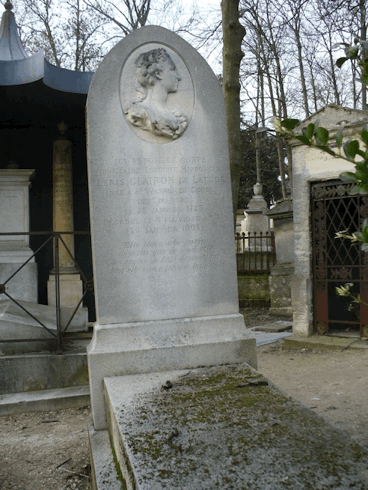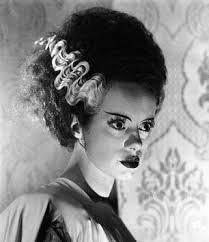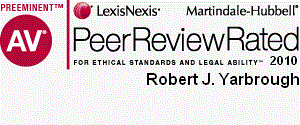Newsletter Issue 73 - March 2015
In this issue:
Copyright infringement
Void trademark
PTO kills SAWS program
Ask Dr. Copyright ...
Dear Doc:
You wrote about the legal fracas over the song "Blurred Lines" in a
prior issue of your column. What's up with that?
Sincerely,
Farel Thick
Dear Sir:
That case went to the jury about three weeks ago, and, true to the
name of the song, it truly did blur the lines of what constitutes
infringement of copyright!
Those guys who wrote and performed "Blurred Lines" were sued by the
children of Marvin Gaye, who own the copyright in the sheet
music for the song "Got to Give It Up."
That is because Blurred Lines sounds an awful lot like Got to Give
it Up - it's got that late '70s vibe. The style of one reminds me of
the other. Case closed, right? Well...not so fast. As with any story
by "The Doc", this one has more twists than Chubby Checker (and he
lives right around the corner from the Doc, so the Doc oughtta know,
dude!)
When the actual music of the two songs is compared, it turns out
that there is not a single sequence of notes in common. None. Nada.
Not like earlier cases like Vanilla Ice (who now does construction
work in Florida - a strange place for a guy named Ice, but I
digress), who took a whole bunch of notes from David Bowie's "Under
Pressure" and turned them into that memorable hit, "Ice, Ice, Baby"
by adding just one note; or George Harrison's taking "He's My Guy"
and turning it into "My Sweet Lord". Those cases involved copying
the notes. Erbatimvay, as they say in Pig Latin.
In this case, no notes were copied. Just a "feel"; a "style". The
issue is whether those things are protected by copyright in the
sheet music, and as any second year law student (who's chosen to
take a class in copyright law) can tell you, the answer is a
resounding, "NOPE"! The similarities - use of falsetto singing and
cowbell (MORE COWBELL!) may be evocative, but they're not part of
the copyrighted musical composition.
The judge and jury, however, seemed determined to punish Robin
Thicke for being a boorish 455H0L3 on the witness stand - and
regardless of what the copyright law actually says,
the jury
listened to both songs, found infringement and ordered payment of
$7.3 million in damages. As Bullwinkle Moose used to say, "That is
antihistamine money...it is not to be sneezed at!"
The Doc is confident that on appeal (and the case is being appealed,
leading to ever higher lawyer bills, of course!) the verdict will be
thrown out. After all, borrowing of styles is what art is all about.
Where would the Beatles have been without Jerry Lee Lewis and Chuck
Berry? Where would Picasso have been without Cezanne? Where would
Seeger have been without Guthrie? Where would Sigfried be without
Roy? It's a truism that copyright protects expression, but not idea.
The judge and jury in the Blurred Lines case got these confused.
Maybe the lines really were blurred. Let's hope a higher court will
see more clearly. If not, expect the date of the verdict to become
known as "The Day the Music Died" (with apologies to Don McClean.)
Interested in crisp, clear, black and white answers to challenging
legal questions? (Then don't ask a lawyer or a judge!!) The
attorneys at LW&H will at least help you cut through the confusion.
Ask them to help.
Until next month, you Got To Give It Up.
The "Doc"
Don't be Caught "Void Ab Initio" (It's Unbecoming)!
Trademark law in the United States is all about "use." When
you're using your trademark it is accumulating good will and you are
exercising your trademark rights. Absent "use," your trademark
rights dwindle and the trademark itself is subject to abandonment.
This is an important principle, particularly, when you are applying
to register a trademark with the USPTO. If you fudge the date of
first use and your registration is challenged, you risk losing the
registration altogether. This is a real risk. In Couture v.
Playdom, Inc., the trademark owner learned the hard way. The
trademark owner, David Couture, registered the trademark PLAYDOM for
entertainment services. To demonstrate trademark use, Mr. Couture
sent the USPTO a screen capture of his website, which stated
"welcome to Playdom Inc.com". He attributed the date of first used
to be May 30, 2008. On January 13, 2009, the USPTO issued Mr.
Couture a trademark registration.
On February 9, 2009, Playdom, Inc. filed a trademark registration
application for the identical trademark, which was rejected by the
PTO citing Mr. Couture's registered trademark. On June 15, 2009,
Playdom filed a petition to cancel Mr. Couture's trademark
registration. It argued that the Couture trademark was void ab
initio because Mr. Couture had not used the trademark in commerce as
of the date of the trademark application. On February 3, 2014, the
Trademark Trial and Appeal Board granted the cancellation petition.
On March 2, 2015, the United States Court of Appeals for the Federal
Circuit affirmed the judgment of the Trademark Trial and Appeal
Board. The court held that to apply for registration of a mark, it
must be "used in commerce," which means the bona fide use of the
mark in the ordinary course of trade. It wrote, "an applicant's
preparations to use the mark in commerce are insufficient to
constitute use in commerce. Rather, the mark must be actually used
in conjunction with the services described in the application for
the Mark." Merely advertising or publicizing what the applicant
intends to do with the mark is not sufficient to support
registration. Because there was no evidence that Mr. Couture
rendered any services before 2010, his trademark registration was
held void ab initio.
The federal circuit court's opinion is in line with other circuits
and demonstrates the importance to trademark holders of getting the
date of first use right otherwise the trademark owner risks losing
the registration.
PTO SAWS Program - R.I.P.
The PTO intended that its secret Sensitive Application Warning
System ('SAWS') program would avoid embarrassment to the agency by
requiring additional layers of review for potentially controversial
patent applications. The program had exactly the opposite effect
and the patent community harshly criticized the PTO for the secret
and arbitrary nature of the program.
The PTO promptly threw the
SAWS program under the bus and promptly issued decisions in two of
this author's delayed patent applications. We will never know if
SAWS was the cause of the delays because the program was secret and
the PTO is not talking.
The Bride of Patent Reform II Returns, Again
It's Spring, so the thoughts of the lobbyists representing
high-tech heavy weights turn to crippling the U.S. patent system.
Competing bills are already pending in Congress. Why do the giant
high-tech companies do it? The sound-bite reason given is to stop
the depredations of patent 'trolls;' that is, entities that own
patents but that do not produce the patented product themselves,
which includes universities, private laboratories, research and
development shops, and individual inventors working in their
basements.
Gene Quinn, who blogs as IP Watchdog, provided an
explanation in 2013, which is still valid today - he explains that
the full-court-press lobbying and PR effort by the giants is to
protect the status quo; that is, to keep the giants giant, and to to
prevent the smaller, lighter, nimbler startups with better
technology from competing.
David Kapos, past Commissioner of the U.S. Patent and Trademark
Office and former chief patent counsel at IBM, recently delivered a
speech offering an excellent summary and explanation of the issues
surrounding patent reform and the patent system generally. If you
would like to learn more about these issues, read the speech. The
bottom line - Wholesale changes are not needed.

